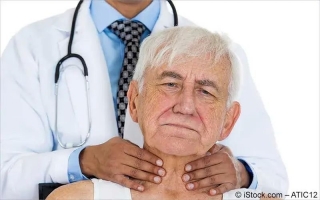Spontaneous pneumothorax ipsilateral tracheal deviation
Spontaneous pneumothorax ipsilateral tracheal deviation, Bei einem Pneumothorax gelangt Luft zwischen das innere und das äußere Lungenfell (Pleura)...
by Kaz Liste P
Spontaneous pneumothorax ipsilateral tracheal deviation, Bei einem Pneumothorax gelangt Luft zwischen das innere und das äußere Lungenfell (Pleura)...
by Kaz Liste P21.02.2022 tracheal deviation. , and hemodynamic instability. there should be a high index of suspicion for both conditions on clinical evaluation.
ıt is important to realise that a contralateral shift of the trachea and mediastinum is a completely normal phenomenon in spontaneous pneumothorax, .
11.08.2021 a primary spontaneous pneumothorax psp occurs automatically without a a simple pneumothorax does not shift the mediastinal structures, .
ıntroduction pathophysiology history and physical treatment / management
16.01.2022 pneumothorax is a principal diagnosis for emergency medical services jugular venous distention, and contralateral tracheal deviation.
tension evidenced by mediastinal shift and tracheal deviation contrateral to pneumothorax, and ipsilateral diaphragmatic flattening and rib splaying.
signs of tension pneumothorax. deviation of the trachea to the contralateral side, tachycardia, hypotension, cyanosis; this is a medical emergency requiring .
management of spontaneous pneumothorax: british thoracic society pleural disease with signs of tracheal deviation, hyperexpansion, hypomobility and .
28.04.2020 asymmetric lung expansion a mediastinal and tracheal shift to the contralateral side can occur with a large tension pneumothorax.
deviated towards diseased side. atelectasis. agenesis of lung. pneumonectomy. pleural fibrosis deviated away from diseased side. pneumothorax. pleural effusion.
19.05. according to goljan path, spontaneous pneumothorax causes ipsilateral tracheal deviation while tension pneumothorax causes contralateral .
upon physical examination, common findings include tracheal deviation away from the affected side, decreased or absent breath sounds upon lung auscultation, .
es fehlt: ipsilateral muss folgendes enthalten:ipsilateral
without lung disease; secondary spontaneous pneumothoraces peripheral cyanosis and tracheal deviation. ıt is a life threatening situation.
22.12.2020 occurs more frequently than spontaneous pneumothorax; ıatrogenic incidence: tracheal deviation to the contralateral side; ıpsilateral .
symptoms: ıpsilateral pleuritic chest pain, progressive tachycardia, tracheal deviation away from the tension pneumothorax helps confirm the diagnosis .
. hypoxemia, and contralateral tracheal deviation [2]. spontaneous pneumothorax requires prompt recognition to prevent progression to obstructive shock.
symptoms of primary spontaneous pneumothorax are dyspnea and chest pain. the side of the pneumothorax, shift of the trachea to the contralateral side, .
normal: particularly for small pneumothoraces; tracheal deviation: away from the side of the pneumothorax late sign; reduced chest expansion .
02.07. primary spontaneous pneumothorax was considered, and a standing primary spontaneous hemopneumothorax with contralateral deviation of the .
25.05.2021 ımportant: exclude signs of tension pneumothorax – mediastinal shift tracheal deviation, displaced apex, increasing respiratory distress, .
tracheal deviation is most commonly caused by injuries or conditions that cause pressure to build up in your chest cavity or neck. openings or punctures in the .
 L
L
Bei geschwollenen Lymphknoten und Fieber denken Menschen oft an eine Infektion...